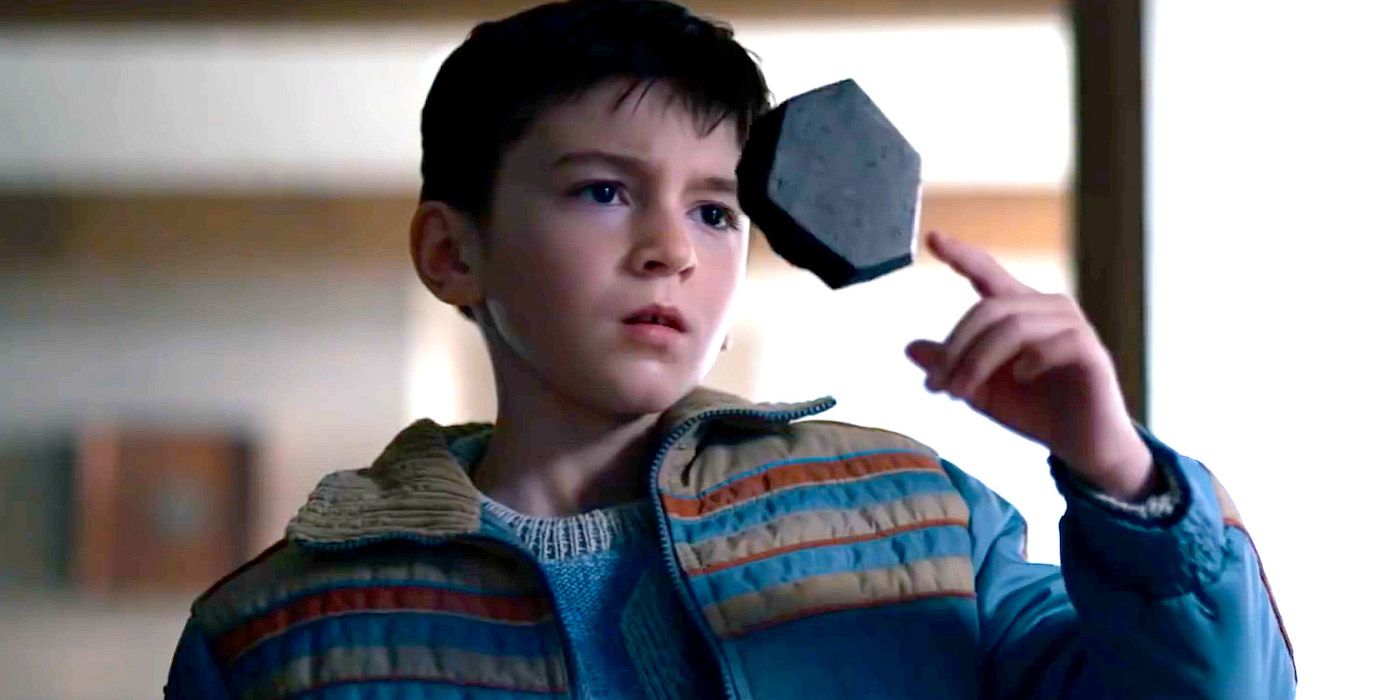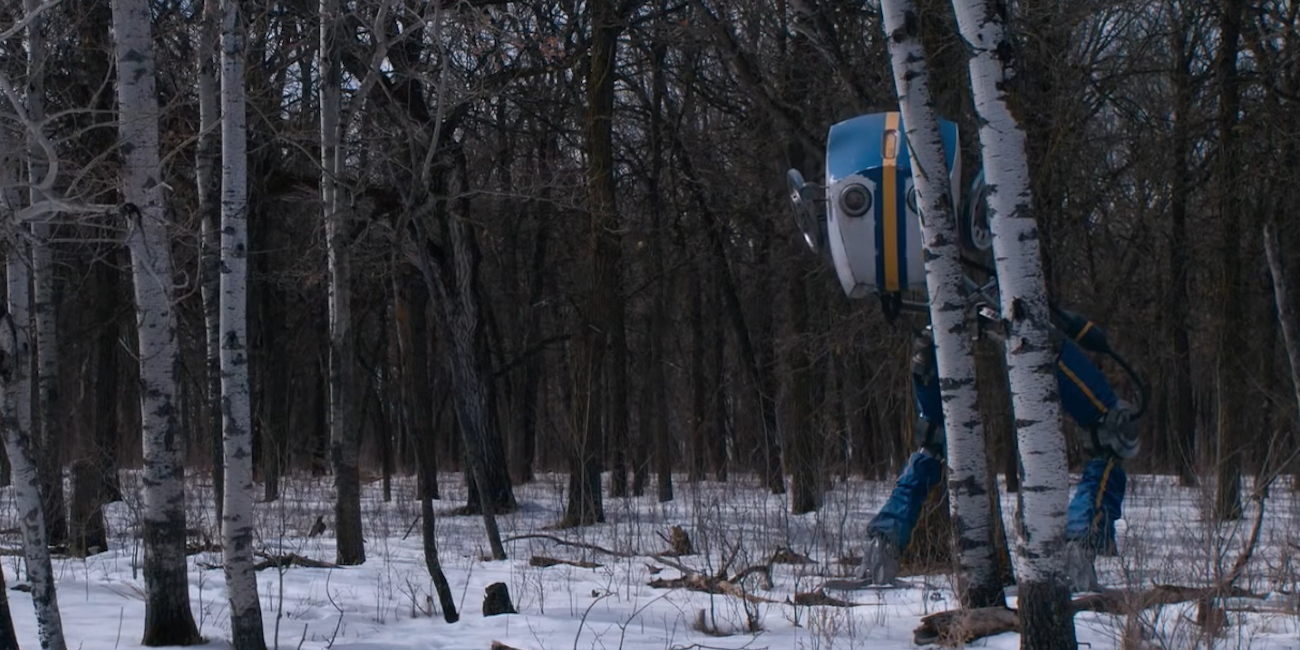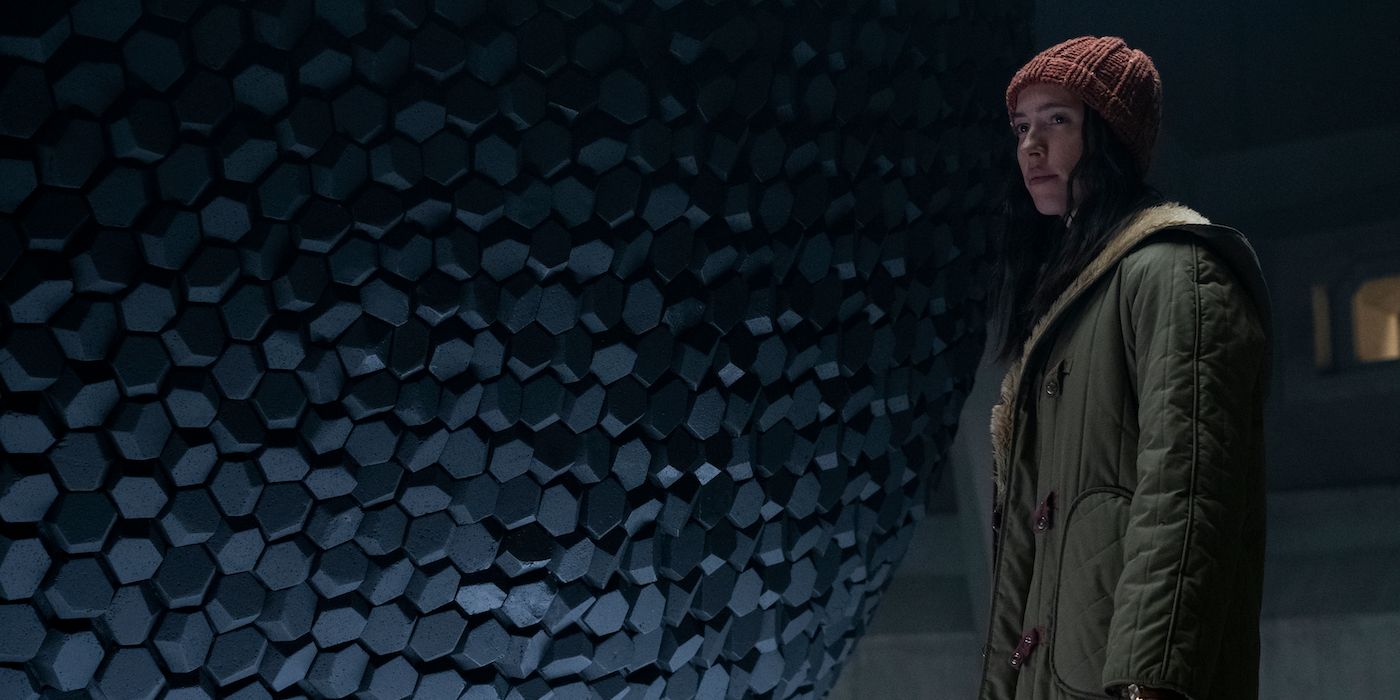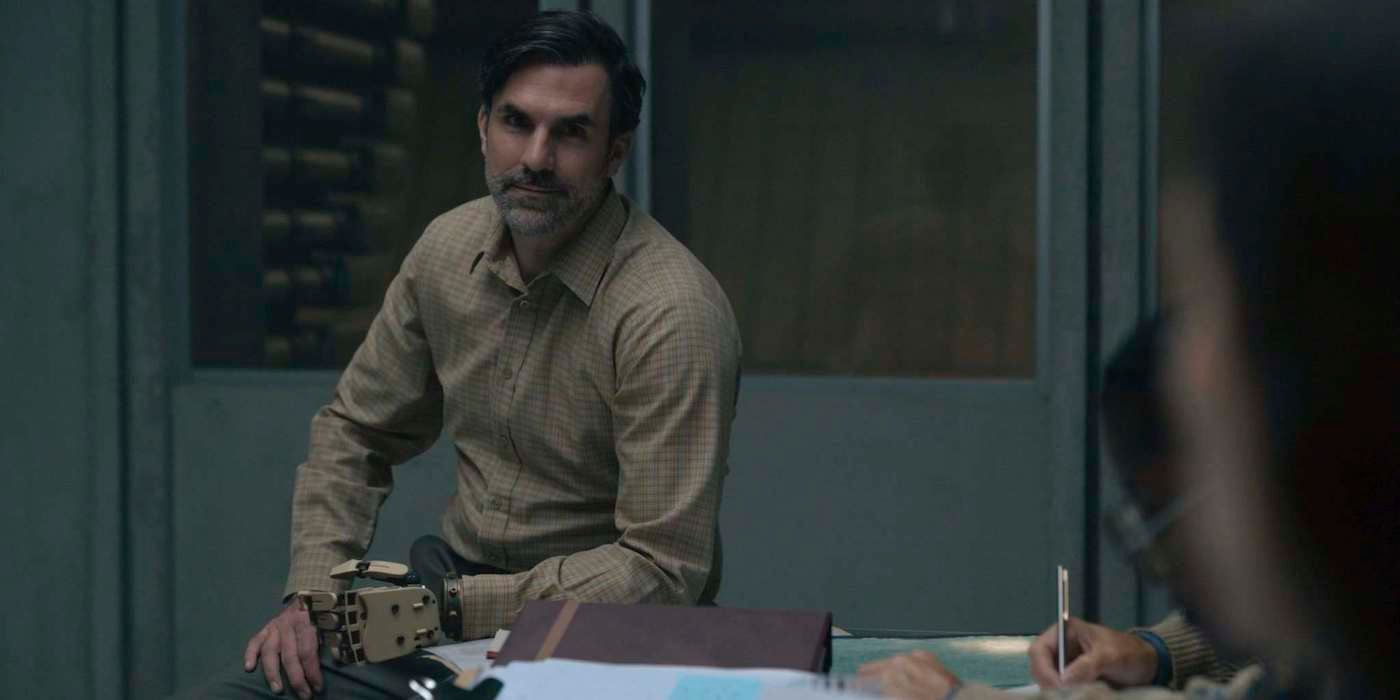Amazon Prime's new sci-fi anthology series Tales From the Loop introduces viewers to a quietly fascinating town that sits above a research facility referred to locally as the Loop. Artifacts from the Loop's reality-defying experiments litter the landscape, and as a result, often change the lives of the locals who come in contact with them. Inspired by a book of paintings of the same name by artist Simon Stålenhag, Tales From the Loop isn't just beautiful to look at, it's also a moving portrait of humanity.
The series was spearheaded by creator and showrunner Nathaniel Halpern, who wrote all eight of the first season's episodes. In an exclusive interview, Halpern spoke to CBR about adapting paintings into a television series, using sci-fi to tell deeply human stories and maintaining the show's sense of wonder.
CBR: Tales From the Loop is noteworthy because of what inspired it. Obviously, TV adaptations from other sources are very common, but this is the first show I'm aware of at least that was adapted from a book of paintings. How did you learn about the Tales From the Loop paintings?
Nathaniel Halpern: Essentially, the beginning was the director Matt Reeves and his producing partners, they introduced me to Simon [Stålenhag]'s work. And I think like most people who’ve seen his work, I was really taken by the aesthetic that he created. Especially, it's very hard in science fiction to have an aesthetic that feels unique, and he has this wonderful marriage between the ordinary and the extraordinary.
And on top of that, I found his work very emotional, there's a poignant quality to his work. And so that combination of that aesthetic and that emotion, I was really drawn to. And then as you stated, there's not exactly a history of doing this kind of thing, so I thought that was really exciting. I’m always looking for: how can you show the audience something new? And so the idea of adapting something from one visual medium to another just felt like a wonderful opportunity that I just jumped at.
What inspired the creation of a show versus a movie from a storytelling point of view?
You know, from the beginning we never really talked about a film so I wasn’t thinking about it. I would say [a TV show] affords you the space to give a portrait of a place. Film, everything is to a certain degree, boom, boom, boom, and… a lot’s left on the cutting room floor a lot of the times.…
I'm a big fan of books like Winesburg, Ohio or Spoon River Anthology, loving portraits of towns and the people who live there. So I think just my own taste probably led to this, of telling these quiet human stories within this backdrop that perhaps maybe a film would have demanded more of an action-driven mystery, which was just not what I wanted to do.
Is that also why you decided on more of this anthology format versus a more serialized story?
I kind of have two answers for that question in that when I was looking at the paintings, I was thinking about their unique quality and how do you preserve it? And so there's really two things: it came from character and also came from wanting to preserve a sense of wonder. Because when you look at Simon's work, there's usually just one element of science fiction and an otherwise-recognizable rural landscape. And so as an audience member, I was thinking, well, how do you preserve that strange juxtaposition and sense of wonder, because if you stick around with the limits that you set up in a more traditional serialized show, the audience might get too used to that and the wonder would just go away. It'll become too familiar. You wouldn't have that sense of the extraordinary going on, and you certainly would butt up against different sci-fi elements coexisting.
So what I wanted to do is, in an effort to preserve the wonder, is there's a new science-fiction element every episode that re-injects the energy of that wonder. So the audience never gets to what I call the "I get it" moment. There's always something new to discover.
But from the character standpoint, which is probably the simpler answer is, I think the alchemy of the storytelling is there's an ordinary person and something extraordinary happens to them. But when too many extraordinary things happen to an ordinary person, they're no longer ordinary, and I don't find them terribly relatable because they’ll have this big convoluted science-fiction backstory. So it dictated a supporting character stepping up and taking center stage and having that extraordinary thing happen to them.
And that is really what guided the structure that you now see is the show of just always trying to keep that balance alive of whoever is that started the episode, we can have a sense of empathy, because like, "I recognize them. I know that life, and I know what they're feeling." And then the extraordinary thing enters their life. It’s also [not a traditional anthology] because… the characters all go through the whole show. So it’s not like we just see them and they disappear. They’re all part of the fabric. So there’s a unique quality to that.
I also thought it was great that the show has these sci-fi elements, that are supporting these very human stories, and the sci-fi reveal is not the thing that matters as much as the human elements. What about sci-fi do you feel supported that very human storytelling?
What’s interesting is, you know, ...I love science fiction, but a lot of times I find the characters are sometimes just there to illustrate the science fiction idea versus the other way around, which is the science fiction’s there to service the character. And I really wanted to focus on that and I think what science fiction affords you, which is wonderful, is here we have these, what I think are deeply human stories about oftentimes our internal experience of how we're feeling quietly, and the science fiction actually allows us to amplify and externalize that, and put it on its feet in a visual way. So I think it grants access to aspects of humanity that might be trickier to do if it was a regular drama.
And in the same way, I think the emotions that are explored in the show, for some reason I feel like the science fiction gives an audience a sense of safety to entertain those emotions, where maybe they might be a little gun shy to go there in a straight drama. There's something about the science fiction that I think opens people up, that I think is a wonderful byproduct of the genre.
We know, though, from shows like Lost there will be people clamoring for answers about what's going on with the Loop. So will we ever get more concrete information about some of the mysteries of the artifacts that we see strewn throughout the town?
The short answer is no. The long answer is, it's just interesting, having written on a fair amount of shows, having seen the different types of audience and how people engage, and some people are very prone to framing things in terms of mystery and puzzles and questions. My mind doesn't quite go there…. I don't find that a particularly emotional way to engage for my own sake. So it was important for me that we go beneath ground in that first episode, and say, here's the Loop and here’s the Eclipse at the center and everything you see above ground is a byproduct of this. And my hope is that puts it to bed but, obviously, people will probably drum up more questions that I haven't even thought of.
But really, when I was making it along the way, my hope is you take your cues from the characters and if the characters aren't asking the question, there's no reason you should if you're following their emotional journey. So it would be quite a different story if, for instance, I had an investigator at the center of it, but we're clearly not telling those stories. So my hope is as the episodes go along and people watch, they start to get on board with, "let's just take our cues from the characters," and these questions hold less and less significance.
What about the visual aspects, because you bring a lot of Stålenhag’s paintings to life. Did you write those into the script first and use those as targets? Or was it organically what felt right for each episode and the visuals came out of that?
I would say the simple telling of it is that each episode was inspired by a single painting. And there's a couple instances where… two or three paintings influenced it, but really the core of the story, it usually came down to: I was looking at one of the paintings and dreamed up the story. If there [were] people in it, who are these people? …You know, it's a little disingenuous in hindsight saying how the creative process works, but it's a proximation of what I feel like happened, which was usually, who is the person, and then I always was trying to chase what I perceived as some kind of universal emotion that we all in one way or another face at some point in life in our own way.
And I wanted to start there and say, "Okay, so it's a story about that feeling." And then it was about well, how does that science fiction aspect amplify that feeling? And really explore that, and how can those all work together that this person represents that feeling and the science fiction amplifies that feeling, and making sure those were all working together. And that's usually how the process began with creating the stories.
Even though the characters suffer these terrible losses and disappointments, in the end, I thought that the episodes included a sense of hope, too, about where the characters could go from there. Can you speak to the tonal balance you were going for with the series?
I really can't say... how happy I am to hear you say that. Essentially, I wanted to tell these emotional stories without being sentimental. And I wanted to basically go on journeys where you have this hard-earned sense of hope… I didn't want to do a show that basically left you feeling like all is lost and there's no hope in the world, I think there's plenty of that out there already. And here to not shy away from life can be very hard, but you can carve out an element of hope….
Because I find sometimes when something's too sentimental, I don't even recognize it. It's like this is just fantasy, this isn't how life is. But if I could tell stories where you could go, I recognize that, I know how that feels, and then take some comfort in how it ends up that the person’s still standing. And hopefully when they turn the page, there is more comfort and hope in their life. I think that that's a wonderful thing to take away from these stories. So that was the tonal balance that just applies to all the stories that I wanted to tell on the show.
How did you collaborate with folks like Matt Reeves and even the painter Simon Stålenhag? What was their input on the different stories that were being told?
Matt Reeves, who is an executive producer on [the show] and introduced me to the paintings, he was… just a wonderful resource, artistically. We have a similar sensibility and similar views on the genre. And so he was just always there as a resource to bounce ideas off of. And… I can't stress enough how much I value his opinion and the relationship we have as a result of this.
And with Simon, Simon was just wonderful. I first met him, and… he was from Sweden and I’m from New Jersey, and within five minutes, we started talking about how our walks to school were very similar, in terms of the landscape. And we just got along quite well and we saw eye to eye… He voiced that he appreciated that I knew this is more about the people than the robots. And so he was just so supportive of me telling the stories I wanted to tell and just make them personal and poignant. But he's also this wonderful artist that I tried to keep as close as possible along the way.
And for instance, there‘re elements in the show that he designed specifically for the show because I’d invented them in the stories. So, for instance, you know the character with the bionic arm? So I asked Simon -- because he has such a specific aesthetic and if he’s there why not ask him -- so I asked him, "What [does a] bionic arm look like in the world of Tales From the Loop?" And I was just floored because he then designed the arm, and I saw the material references and the color and everything. And then our visual effects team built that arm. So there's several instances of that… where he generously gave his time to design an element because I just wanted to be as faithful as possible to his aesthetic. And of course, he also did the posters, the key art for the show, inspired by what we shot. So there's a wonderful circular aspect to the artistic process there.
Tales from the Loop stars Jonathan Pryce, Rebecca Hall, Jane Alexander and Paul Schneider. The show is streaming now on Amazon Prime.




